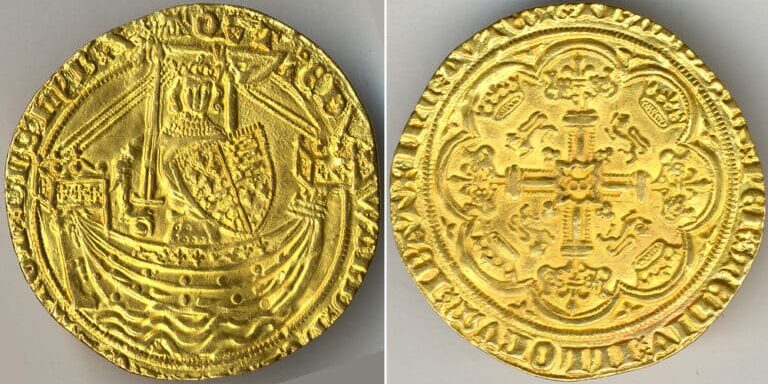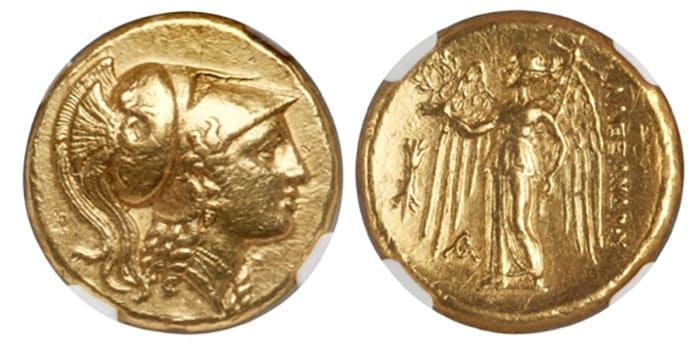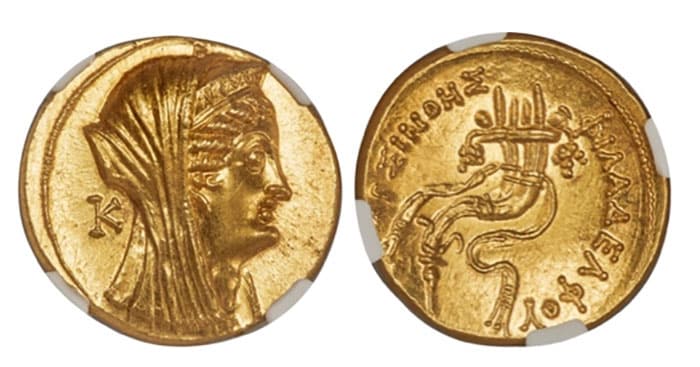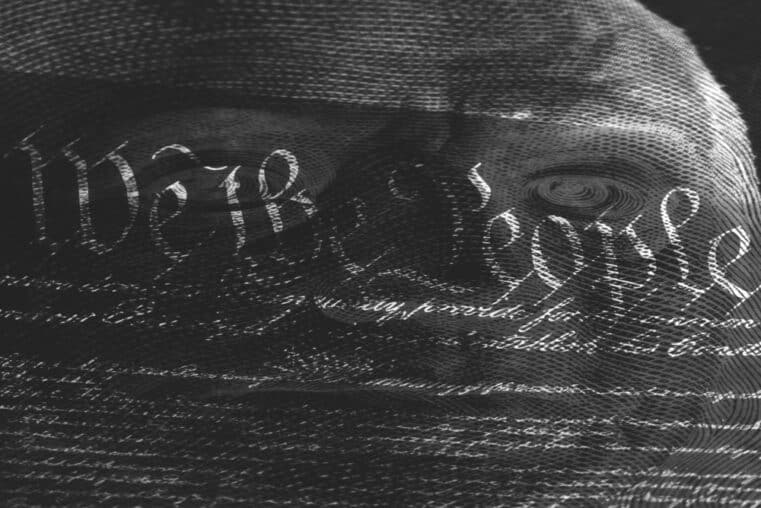
The Stories Behind Five Ancient Gold Coins
EDITOR'S NOTE: As much as we don’t like to admit it, we tend to group things in terms of binaries, whether it's out of habit, convention, human nature, or just plain laziness. Things are black/white, good/bad, etc. One binary that’s embedded within the founding documents of our nation’s democracy is that of the corporeal/incorporeal, or material/spiritual. We see that in the separation of church and state. The use of gold to back currency, however, breaks this polar duality. Its millennia-long tradition was a “practical” tool that bridged the real-world function and a kind of incorporeal sphere. Gold possessed more than just monetary value. It was viewed as a physical object that somehow exceeded its own materiality. It bridged both realms, embodying the universal notion of monetary value within its corporeal structure. The piece you’re about to read is about five ancient gold coins and the stories they tell. Their numismatic values, of course, are exceedingly high. But what they can tell us about who we are today is much more valuable, as gold sees the beginning and end of civilizations as they enter and exit prosperity and, eventually, ruin.
By Tyler Rossi for CoinWeek …..
As a divine metal, gold not only served as a store of wealth for the rulers of ancient societies but it was also an earthly representation of unending and incorruptible divinity. Coins struck in gold, while definitely earthlier and more materialistic than religious or decorative items, also retained a special place in ancient societies. Due to their high value, these early gold coins were generally used for massive payments, either state-to-state transfers or military payments for long-term service, and were rarely handled by the general population.
The coins below are no exception. They make up an interesting grouping of historically important pieces that demonstrates the many political and economic roles gold coinage could be employed by various states.

Representative of the first true series of gold coins, and the world’s first bi-metallic coinage system, this coin is a testament to the advancements in early Lydian metal working. Prior to the reign of King Croesus, all Lydian coins were made from electrum, a naturally occurring alloy of gold and silver. When Croesus came to the throne, Lydia was the dominant power in Asia Minor. As Harlan J. Berk describes in his book 100 Greatest Ancient Coins, the lion and bull which comprise the design on this gold stater are symbolic of strength, power, and fertility.
New refining techniques, developed in the Lydian capital of Sardis, allowed for a proper standardization of coin values. In this short-lived system, gold and silver staters were identical in weight. These so-called heavy staters were supposed to weigh 10.89 grams. However, because silver and gold have such vastly different intrinsic values, this weight system made trade difficult and so it wasn’t long before the standards were shifted. In the new system, 10 silver staters were equal to one gold stater, which weighed 8.17 grams, resulting in a silver-to-gold ratio of 13.3: 1.
As a result of this shift, the heavy stater became much rarer and is now more sought after by collectors than the later types.

As Alexander the Great rolled through the ancient world, his armies collected an absolutely stunning amount of looted precious metals. It is estimated that by the time he conquered Persepolis, Alexander had amassed a war chest of more than 200,000 talents of gold and silver. Each talent was worth approximately 3,600 shekels. This translates to roughly 12,000 drachmae or almost 6,000x a daily wage. Due to this massive influx of gold, Alexander was forced to begin striking gold distaters.
These new coins were most likely used to pay off the debt Alexander owed to his soldiers; he had promised each one a talent of silver. These coins provided a much easier method of payment. In fact, instead of giving each soldier 1,500 tetradrachmai that weighed an estimated 56.25 modern pounds, Macedonian authorities could pay their soldiers with as few as 120 gold distaters. So valuable was each distater that one coin was worth roughly two months of wages.
This particular lifetime example struck at the Macedonian mint at Amphipolis does not exhibit the extensive wear common to the type. Originally an Athenian colony located in the northern Greece, Amphipolis served as the staging ground for Alexander’s eastern campaigns. The city also hosted what was perhaps the most important Macedonian mint and was responsible for striking massive quantities of Alexandrian coins.

Similar to the Macedonian distater above, this mnaieion represents a massive store of wealth and was used mainly for military payments. The wage of a contemporary Egyptian soldier was roughly one drachm per day or 30 drachms per month, and this coin was equivalent to approximately 100 days of work.
Arsinoe II, the queen pictured on the obverse, was born in 316 BCE to Ptolemy I (the Great) and his wife, Queen Berenike. While still young, Arsinoe was married three times. First to Lysimachos of Thrace, then to her half-brother Ptolemy Keraunos, and shortly thereafter to her other brother Ptolemy II. She left Keraunos during his struggle for the Egyptian throne. Since Keraunos remained at the court of Lysimachos, power shifted to Ptolemy II, and Arsinoe fled to Egypt and as an expert political actor, Arsinoe II quickly became a force in national politics.
This coin, however, is posthumous and was struck between 193 and 116 BCE during the reign of either Ptolemy V or Ptolemy VIII at least 75 years after the queen’s death. On the obverse, the deified Arsinoe is veiled and wears a stephane-type diadem. The stephane, while not an indication of deification itself, does denote the important status of the wearer. To the left of the bust is a small “K”, which is thought to denote the obverse dies. It is possible that these later K-type mnaieions actually depict Kleopatra II, who was either sole or co-ruler of Ptolemaic Egypt with her two brothers when the coin was struck. Additionally, the K-type portrait does not resemble the portraits of Arsinoe II on coins struck closer to her lifetime.

Struck by one of Octavian’s traveling military mints in southern Gaul when he became consul of the Roman Republic in 43 BCE, this gold aureus is exceedingly rare and serves as a pronouncement of victory.
As with many gold coins, this piece depicts a deity. On the reverse is the deified Caesar ringed by the titles he held at the time of his assassination a year earlier. As one of the gold portrait coins struck near-contemporaneously to Caesar’s lifetime, the reverse is quite similar to Caesar’s realistic lifetime portrait denarii. It is no surprise, then, that this coin served as pure propaganda for Octavian on his rise to being the Princeps of Rome.
As the adopted son of Caesar, Octavian used this relationship to promote his status as heir apparent. This coin is a tool to show Octavian’s soldiers and supporters that he was intimately connected to the slain Caesar. Not only this, but the coin also shows subconsciously that Marc Anthony was not the legitimate heir to Caesar’s Rome. The obverse legend, which labels Octavian as Consul Caesar, is part of this propaganda, and serve as a further connection to Julius Caesar. The design must have been important for Octavian since coins from this issuance were likely used to pay his legions that invaded Rome in mid-43 BCE. Additionally, most of these soldiers had served under the recently assassinated Caesar.
The provenance of the coin pictured above can be traced back over 80 years.

This next coin, struck less than 10 years after the previous portrait aureus of Octavian (Augustus) and Julius Caesar, follows a similar trend.
As part of a series of coins struck to honor the Julio-Claudian dynasty, this coin connects Caligula to the dynasty in an attempt to provide even more legitimacy for the brutal ruler. While the obverse design is not in question, as it is a typically severe portrait of Caligula ringed by his titles, the reverse is viewed with some questioning.
It is unknown whether the radiate portrait on the reverse depicts Caligula’s father, Tiberius, or his grandfather, the Divus Augustus. If it is the former, then the two flanking six-pointed stars would represent both Augustus and Julius Caesar, both of whom had been deified. If it is the latter, then the stars would simply represent the divine status of Augustus. There is another variety of this type that, instead of two stars, has the legend DIVVS AVG PATER PATRIAE, which translates as “Divine Augusts, Father of the Country”. Since the second type definitely depicts the Divine Augustus, and because Caligula was striking coins with many family members, the coin pictured above likely depicts Tiberius.
Like Augustus, Caligula needed to rely on dynastic legitimacy in order to maintain imperial power. This was particularly important since Caligula did not have any great military experience or victories upon which to base his rule.
* * *
Sources
https://www.brown.edu/academics/archaeology/publications/alexander
https://studenttheses.universiteitleiden.nl/access/item%3A2659805/view
* * *
About the Author
Tyler Rossi is currently a graduate student at Brandeis University’s Heller School of Social Policy and Management and studies Sustainable International Development and Conflict Resolution. Before graduating from American University in Washington D.C., he worked for Save the Children creating and running international development projects. Recently, Tyler returned to the US from living abroad in the Republic of North Macedonia, where he served as a Peace Corps volunteer for three years. Tyler is an avid numismatist and for over a decade has cultivated a deep interest in pre-modern and ancient coinage from around the world. He is a member of the American Numismatic Association (ANA).
Originally published on Coinweek.










